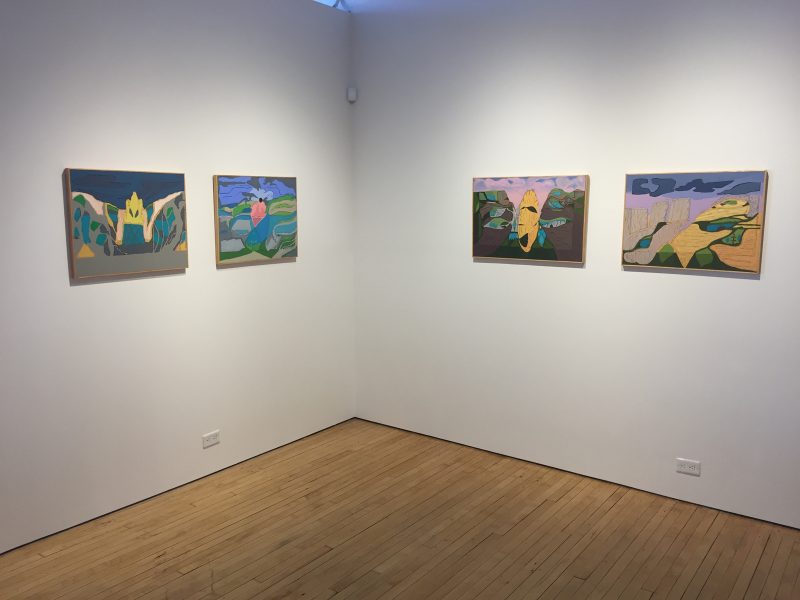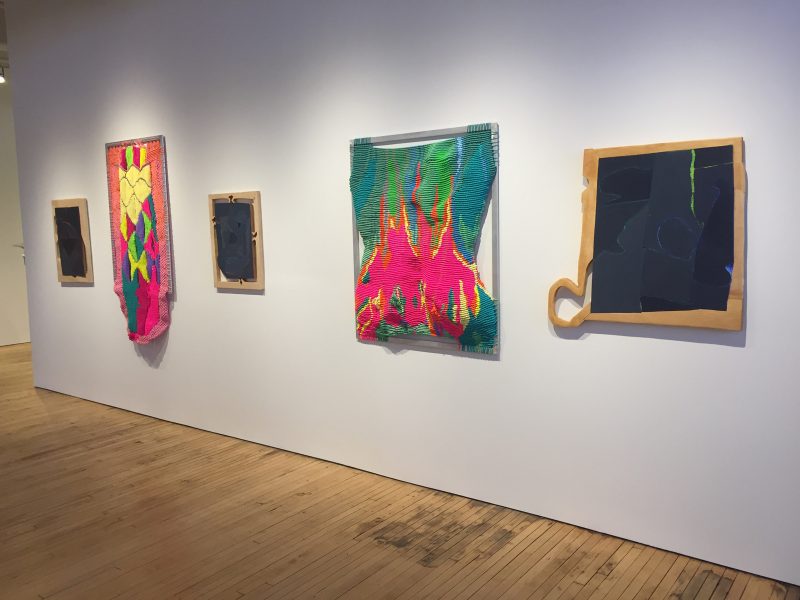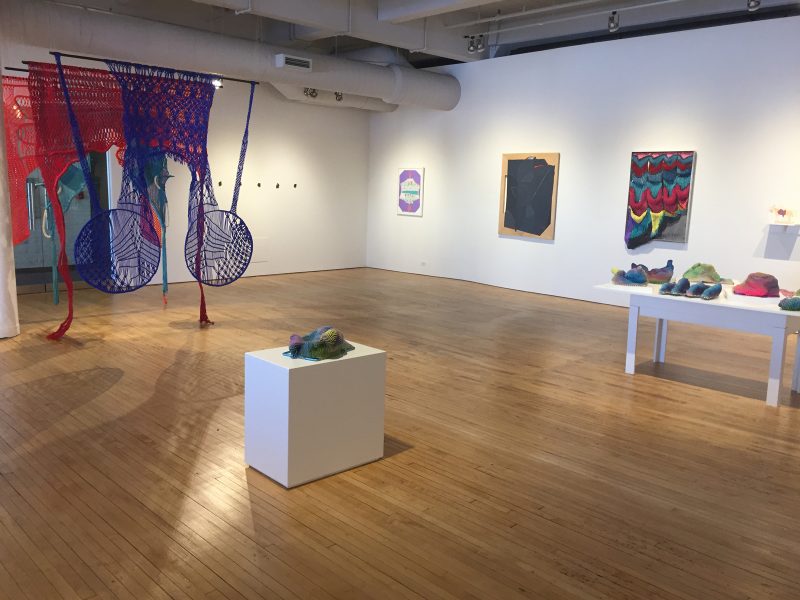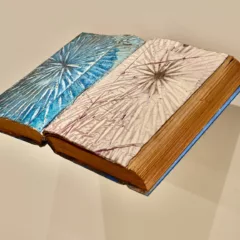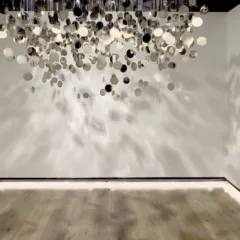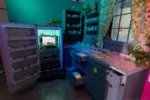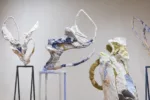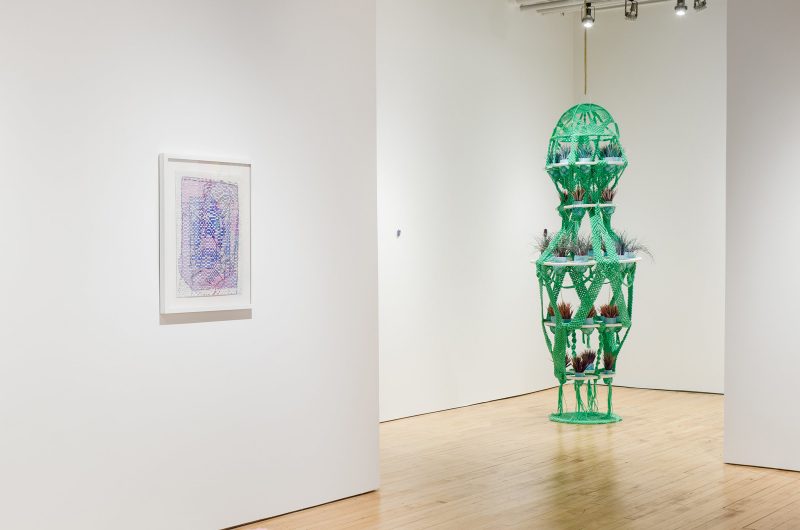
Experiencing Mending and Repair in Response at Fleisher-Ollman is like frolicking through a textured, colorful wonderland of strange and fantastical objects. The work on view, by Jesse Harrod and Lisi Raskin, aims to respond to traditional outsider art (James Castle, Joseph Yoakum) and expand the traditional definition of “outsider” to include these artists’ identities–that of queer and disabled: the paracord used in much of Jesse Harrod’s work alludes to kink; a material that Raskin uses in all of her works (as listed on the gallery’s checklist) is “nerve pain.” While this term is explained nowhere in the exhibition materials, I assume that this refers to the chronic pain that Raskin must push through to complete her work. After viewing the exhibition, it still took me many days to grapple with and begin to digest the artwork, and to grasp these material and conceptual underpinnings beyond the sensory and material pleasures of the exhibition. That, however, is the charm of such work–it sticks with you, and reveals itself in layers, inviting you to mentally unwind the paracord, and zoom in on the nerve pain buried within the layers of paint. Only then does it truly unveil itself as the thought-provoking and sticky work that it really is.
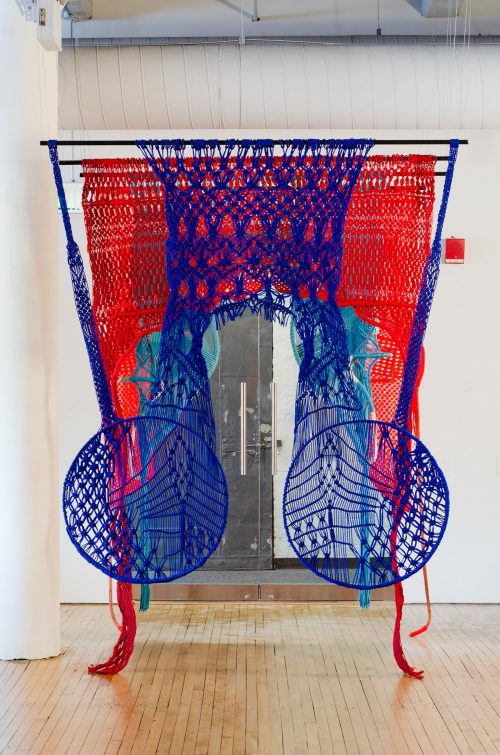
The entrance to the show is marked by Jesse Harrod’s “Taught Tight Tender Sway”–a paracord and metal sculpture that hangs in layers from the ceiling. It acts as a gateway, a sort of birth canal, marking the liminal space between the colorful realm of the exhibition, and the outside world. This opening installation prepared me to experience the rest of the show. I continually found myself wanting to reach out and touch–to run my fingers along the woven and twisted textures found on walls, tables (namely, Jesse Harrod’s “Mons” series), and hanging from the ceiling. The materials and their bright colors made me feel like a kid in a candy store–face pressed right up against the glass case of delicacies, but unable to taste.
On a more adult-level, I thought of consent: the lack thereof to physically interact with these objects. This connection to sexuality was founded on the materials present in the gallery, and was physically embodied within “Bonbon” (2019)–a sculpture that once again uses paracord, this time to cradle artificial plants instead of mark an entryway/ exit-point. Little gold chains hang throughout the sculpture–flashes that I caught upon close inspection of the alien structure. “Bonbon” is bodily, but also implies something morphing, like a bubble in a lava lamp. Up close the details of the work–such as the chains and fake plants–become clear, and their strangeness entraps you like a fly in a spider web. From further back, the sculpture morphs again: no longer an extraterrestrial ecosystem, but now assuming the shape of a huge sex toy. Of all of the many objects on view, I spent the most time with this one, trying to figure it out, to untangle myself from its web.
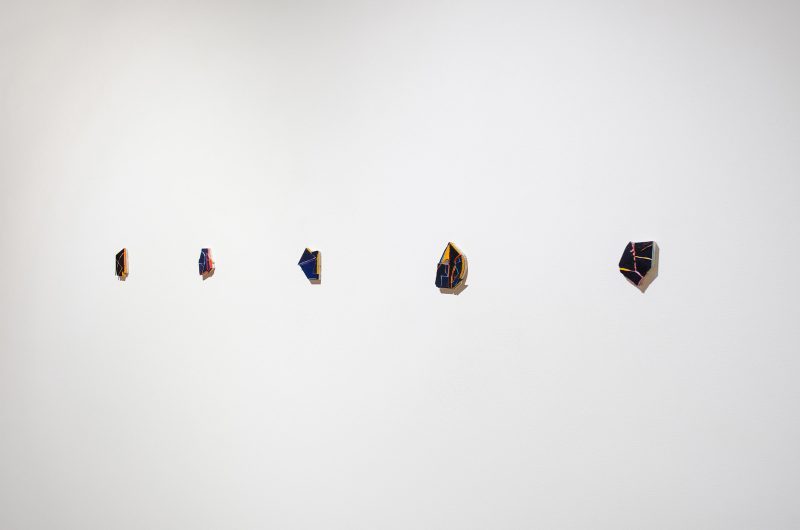
Another group of works that drew my attention are Raskin’s comparatively miniscule “Leaden Hearts” that hang throughout the gallery. The “Hearts” have a gem-like quality. At first they appear dark, perhaps even cracked, but on closer inspection I found them to be unexpectedly colorful–they struck me as very hopeful. Each has a unique shape and color scheme. The color seems to seep out from within – bleeding from painted lines that look like cracks or veins. These objects almost seem to glow, becoming little star-like shards; they have a mystic quality about them that is enchanting.
This mysticism expands into another Raskin painting series: “I imagined…”. These paintings feel, to me, like the pages of a tropically-set comic book stripped down to the essential shapes and colors. Visually, they are complex, and yet approachable. Accordingly, one might think that the long titles (for example, “I imagined having coffee together and remarking how high and flat must the cliffs have been in order to push against the sky that way”) would detract from the art, perhaps giving the artist something to hide behind, or acting as a way to inject meaning that lacked from the visuals. I did not find this to be the case. Instead, the titles reinforce the interesting mythology that Raskin forms throughout the series–a fantasy that extends into her body of work on the whole. I found the “I imagined…” paintings to be some of the most thematically successful in addressing the thesis of the exhibition: they felt powerful, but remained understated. Their location near the fringe of the exhibition speaks to the “outsider” status that these two artists push to redefine, and their imaginativeness brings a fresh perspective to their project of response, or homage to other artists that Fleisher-Ollman shows and represents.
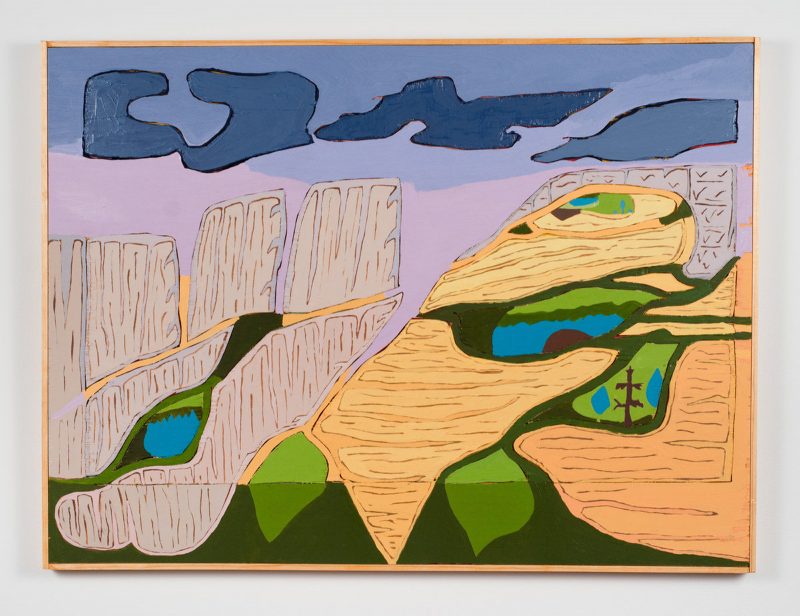
One outlier in the show was Jesse Harrod’s “Tender Buttons” video. It is an odd, 6-minute piece made up of what seem to be disconnected, unrelated moments. After multiple viewings I remained unable to form a coherent thought about what I was seeing. What is this strange piece that shows, at one particularly weird point, someone birthing houses? I was charmed by the hand-drawn stop-motion style of the film, and the craft of it hooked me (like the rest of this exhibition), but aside from feeling unsettled, I was unmoored. There is an orgastic quality to the work, an attitude, a joyous irreverence. Toward whom? That remains one of the lingering wisps that I am left with, now more than a week after seeing this exhibition.
In that regard, I must call the show a success. The best art provokes. It brings tears or laughter or discomfort. It nags you after you are no longer standing in front of it. Mending and Repair in Response has done that for me. I found its opaqueness and broadness to be challenging – frustrating, even – and I do not believe it to have been fully resolved. Therein lies its value: this exhibition is not a period at the end of a fully-formed sentence, ready for printing. It is a brainstorm, a thought bubble, an invitation to reconsider the canon, and redefine how the system thinks of “outsiderness.” I have no doubt that, for me at least, my experience at this exhibition will continue to linger in the back of my mind for quite some time.
“Mending and Repair in Response,” Jesse Harrod and Lisi Raskin, Fleisher-Ollman Gallery, September 13 – October 26, 2019
More Photos
